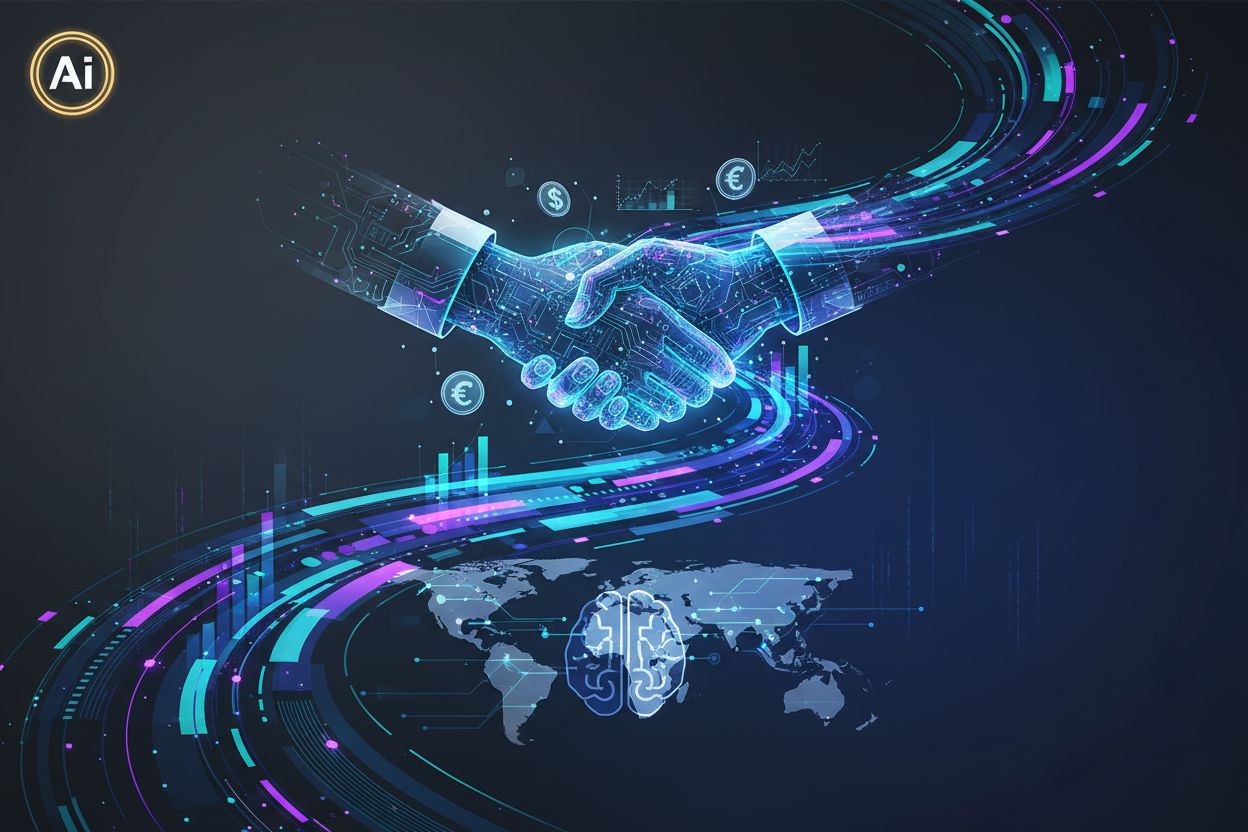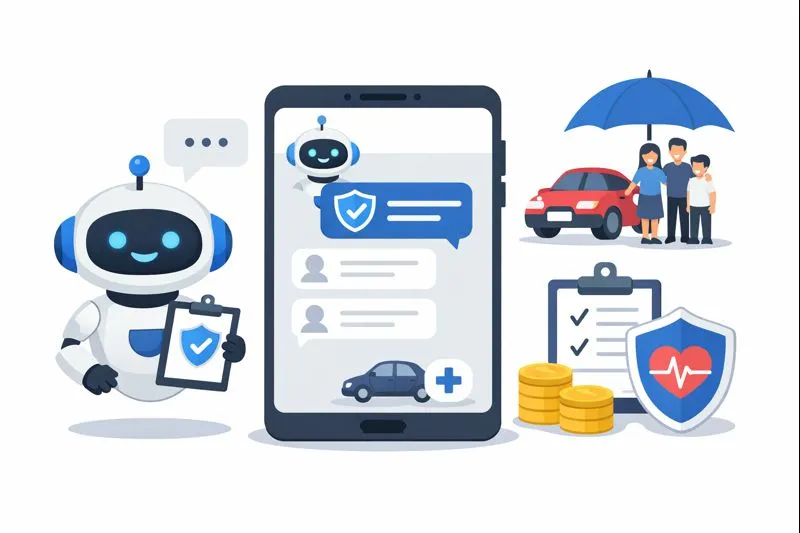How AI Is Transforming Supplier Negotiations

TL;DR
The AI Revolution in Supplier Negotiations: An Overview
Okay, so ai in supplier negotiations... is it just hype, or is it actually changing things? Turns out, it's kinda a big deal.
ai is evolving from basic automation to making strategic calls. Think beyond just cutting costs; it's about speed and agility in complex supply chains. This evolution means AI can now identify optimal pricing based on real-time market fluctuations, suggest alternative suppliers when risks arise, and even predict future demand to secure better terms. For example, instead of just automating purchase orders, AI can now analyze historical data and market trends to recommend the best time to place a large order or suggest a multi-year contract with a specific supplier to lock in favorable pricing.
what's driving this? well, it's things like needing to be faster, handling more suppliers, and making decisions quicker, especially when, like, global events throw a wrench in the works.
Gartner, those analyst guys, predicts that half of all companies will be using ai-powered negotiation tools by 2027. It's kinda wild, right? Initially, it was all about simple, repeatable purchases, but it's moving beyond that.
It's not just about saving money anymore, either. it's about being faster and more adaptable. And hey, who doesn't want that?
Get ready to dive into how ai is transitioning from simple automation to something way more strategic. These advancements in real-time market awareness and the ability to make smart trade-offs are the foundational steps toward truly autonomous negotiation. Next up: from automation to autonomy.
Unlocking AI's Capabilities: Real-Time Market Awareness and Smart Trade-Offs
Want to know what's really changing the game in supplier negotiations? It's all about ai, and it's not just some futuristic fantasy. Ai is diving deep into real-time market awareness and making some seriously smart trade-offs.
Real-Time Market Intelligence: Imagine having ai tools that track supply, demand, pricing, plus what your competitors are up to. This is huge for industries where prices jump around a lot or you're constantly renegotiating. Machine learning algorithms can process vast amounts of data from news feeds, commodity markets, and even social media to provide instant insights.
Operational Contextual Intelligence: It's like ai can now blend internal data—think budgets and supplier scorecards—with what's happening out in the world, like new regulations or currency changes. This means ai can adjust your negotiation game plan on the fly. Natural language processing (NLP) can scan and interpret regulatory documents, while predictive analytics can forecast the impact of economic shifts.
Smart Trade-Offs: Generative ai can help you balance cost, sustainability, how fast you need something, and even financial risks. It's not just about getting the cheapest deal anymore. For instance, generative AI could propose a negotiation strategy that slightly increases cost in exchange for a guaranteed delivery timeline or a commitment to sustainable sourcing, presenting these options with their potential impacts clearly laid out.
With ai handling the data crunching and analysis, procurement teams can focus on building stronger, more strategic supplier relationships. Ready to see how this ai stuff actually works? Next, we'll look at how ai is being applied in the real world.
The Path to Autonomous Negotiation: Stages and Examples
Okay, so fully autonomous negotiations? Sounds like sci-fi, but it's kinda here. Think ai handling deals end-to-end, within some… you know, guardrails. These guardrails are essentially predefined limits and parameters that ensure the AI operates within acceptable risk and ethical boundaries. They might include maximum price increases allowed, minimum quality standards, or specific clauses that must always be included in a contract. Human oversight is typically required for any deal that falls outside these pre-set boundaries or for highly strategic, high-value agreements.
Real-time Data is Key: These systems use current inventory, supplier history, and market data to close deals. Imagine ai knowing exactly when to strike.
Walmart's Replenishment: Yup, Walmart is using ai for negotiating replenishment terms on those everyday, low-margin items. This allows them to maintain optimal stock levels and secure consistent pricing on high-volume goods without constant manual intervention, demonstrating a form of autonomous negotiation for routine transactions.
AMD's Contract Markup: Advanced Micro Devices (AMD) uses Luminance's Automark-up to handle non-disclosure agreements. This application of AI, specifically NLP, automates the review and markup of standard legal documents, significantly speeding up the process and reducing the need for legal teams to handle every single NDA, showcasing AI's role in automating specific negotiation-related tasks.
The End Result: Ai takes care of the little stuff, freeing up humans for the bigger strategic plays.
It's not perfect yet, of course, but it's definitely the direction things are heading. Next, we'll talk about how to get on this path.
Navigating Implementation: Data Quality, Security, and Compliance
Okay, so you're diving into ai for supplier negotiations? Cool, but HOLD UP. Before you get all excited, let's talk about the not-so-glamorous stuff: data, security, and keeping the lawyers happy.
Data Quality is King (or Queen): Ai is only as good as what it knows. So, that data? Needs to be accurate, timely, and—here's the kicker—legally compliant. You can't just feed it anything.
Lock It Down: Sharing sensitive data? Yeah, that's a big deal. Encryption, access controls, the whole nine yards. Think Fort Knox, but for procurement data.
Compliance isn't Optional: Remember those regulations? Like the EU's GDPR and the EU's AI Act? The AI Act, for instance, is a comprehensive piece of legislation aiming to regulate AI systems based on their risk level, with stricter rules for high-risk applications. For procurement, this means ensuring AI tools used in negotiations are transparent, fair, and don't perpetuate bias, especially when dealing with sensitive data or making critical decisions. These aren't suggestions; they're rules. Human oversight is still a must, especially for the touchy stuff.
Trust me; you want to get this stuff right. Next up, building trust through explainability.
The Evolving Role of Procurement Professionals
Okay, so AI's changing supplier negotiations, but what does that really mean for those procurement pros doing the actual work? Are they out of a job? Nah, probably not.
More strategic, less… grunt work: AI is automating the boring stuff, like sifting through mountains of contracts. That means procurement folks can focus on actually strategizing and building relationships. It's like, instead of just haggling over price, they're figuring out the best partnerships for the long haul.
High-stakes negotiations: Think, bigger deals, more complex situations. Like, instead of arguing about paperclip prices, they're negotiating multi-million dollar contracts with crucial suppliers.
Developing new skills: It's not just about knowing the markets anymore. Procurement pros are gonna need to understand AI tools, interpret data, and, you know, actually use all that fancy tech to their advantage. This includes understanding the outputs of machine learning models for price forecasting or using NLP tools to quickly analyze contract risks.
So, it's not about robots taking over. It's about humans and AI working together—AI doing the heavy lifting, and humans bringing the smarts and strategy. It's kinda like having a super-powered assistant, if you ask me.



